With Ghostwire: Tokyo, developer Tango Gameworks takes a completely different approach. With The Evil Within, the studio remained faithful to the previous work of founder Shinji Mikami, who earned his spurs with survival horror games such as Resident Evil. Ghostwire: Tokyo still has the necessary horror influences, but is much more action-oriented and also trades the stereotypical abandoned mansions for the beating heart of Tokyo: Shibuya. That works out well.
At the beginning of the game we see how a mysterious fog suddenly makes everyone in the famous district disappear. The normally insanely busy intersection in front of the train station in Shibuya in the blink of an eye changes into a ghostly scene, where only a few piles of clothing left behind are silent witnesses of the disaster that just happened.
There is still screaming music from the shops and all the billboards are still brightly lit, but there is no longer any shoppers to lure in. Yet the district turns out to be anything but deserted when not much later all kinds of ghosts and demons parade through the streets. Slenderman-esque businessmen, headless schoolchildren, those The Ring-esque girls; the entire nightmare cast is present.
The only survivor is you: Akito. He is fortunate that just before the fog rolled in, he was possessed by the ghost of KK, a deceased ghost hunter. Not only does this help Akito survive the fog, it also gives him supernatural powers. With a swift movement of the hand, he fires gusts of wind as if they were bullets. Armed with their combined forces and knowledge, Akito and KK set out to find out exactly what happened.
Shibuya definitely plays a starring role in this. The city looks really beautiful, partly due to the high-quality ray tracing. The game has several graphics options, including multiple options with ray tracing. I chose to play the game for the most part in Quality Mode, in which the game runs at ‘only’ 30 fps, but makes up for it with the high resolution and beautiful ray tracing. Those who prefer to play at 60 fps can exchange ray tracing for a stable 60 fps. There is also an intermediate option that allows ray tracing with a higher, but slightly more unstable frame rate and slightly lower resolution. In short: there is something for everyone.
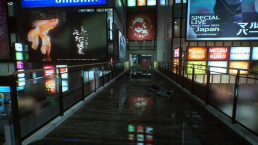
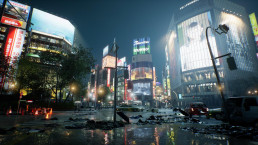
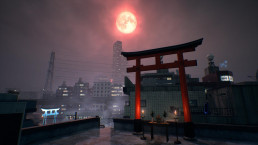
Despite its original angles, Ghostwire still falls for a well-known pitfall: after a while the stretch is a bit out. The narrative passages, which usually take place in closed environments, are considerably stronger towards the end than the open world. After all, in the closed environments there are boss fights and a lot of paranormal activities are played that completely turn the environments upside down.
In the open world, which at first is so beautiful to explore, the endless confrontations with ghosts at some point become a routine job. You pop some fireworks from your fingers, pull the core out of your enemies in a spectacular way, and can continue again. Three blocks away, the same scenario awaits you.
It also doesn’t help that you unlocked all your powers quite early in the game. New skills can still be unlocked via a standard skill tree, but they mainly make your existing powers slightly stronger. Visually nothing changes and you don’t have to press any other buttons.
It’s a shame that Ghostwire already loses its powder in the first half of the game, because the game really has tons of originality to offer. For example, it was nice that you hear KK’s voice not only through all your speakers, but also through your controller. Normally I’m not a fan of audio through the controller, but in this case it makes KK’s voice completely ‘surround’ you, as if it were really a voice in your head. The controller’s speaker is also used to pick up some sort of noise when ghosts are around, which gives a pretty eerie feeling every time.
In any case, the audio is of a high level. Attacks from enemies, for example, really fly right past your head, but also while exploring Shibuya you can place a dog’s barking or a cat’s meowing quite well in space. Why is that important? Well, Shibuya’s animals can help you in many ways. Plus, you can pet and feed them! That alone is reason enough to go after animal sounds.
I can still fill paragraphs with fantastic details from Ghostwire: Tokyo, or anecdotal side missions that you find in the city, but I especially recommend that you discover all of that yourself. Tango Gameworks shows with verve that they can not only make gore horror, but can also pick your brain with paranormal horror. They can also create a beautiful game world. Making that game world fascinating to the end is only an improvement for their next game.
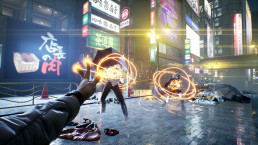
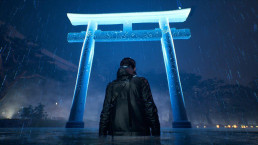
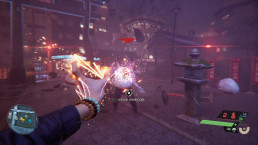
Conclusion:
Ghostwire: Tokyo is bursting with originality and also looks great. Still, that can’t prevent that typical open-world game routine creeps in towards the end of the game.
Ghostwire: Tokyo will be available on March 25 for PlayStation 5 and PC. For this review, the game was played on the PS5.
Score:
9,0
+ Very intriguing and unique setting
+ Top notch audio
+ Shibuya is beautifully crafted
+ Original combat system
– Very repetitive towards the end of the game.